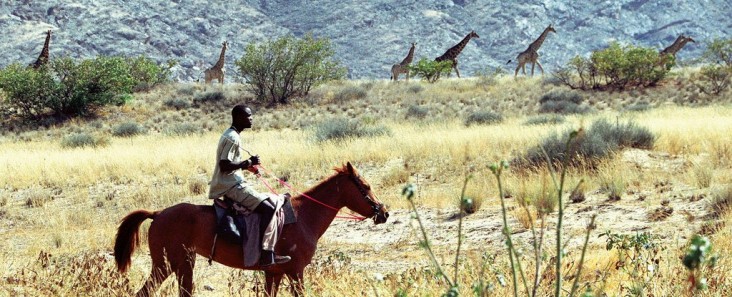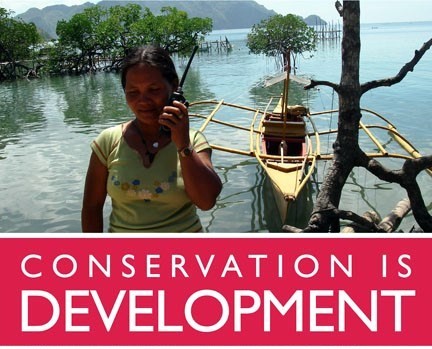- What We Do
- Agriculture and Food Security
- Democracy, Human Rights and Governance
- Economic Growth and Trade
- Education
- Ending Extreme Poverty
- Environment and Global Climate Change
- Global Climate Change
- Conserving Biodiversity and Forests
- Sustainable Urbanization for Global Progress and Security
- Securing Land Tenure and Property Rights for Stability and Prosperity
- Sustainable Land Management
- Environmental Impact Assessment
- Knowledge Management for Environment and Natural Resources
- Sustainable Tourism
- Earth Day
- Gender Equality and Women's Empowerment
- Global Health
- Water and Sanitation
- Working in Crises and Conflict
- U.S. Global Development Lab

“Biodiversity is not just a luxury for the rich,
it is a necessity for the poor.”
Conserving the diversity of life on earth is fundamental to human well being. Once considered a niche issue or special interest, biodiversity conservation is now recognized as critical to achieving equitable and sustainable development. USAID's Biodiversity Policy describes the Agency's commitment and approach to conserving species and ecosystems, and our focus on integrating biodiversity with other sectors for improved conservation and development outcomes.
USAID invests about $250 million each year to conserve biodiversity in more than 50 countries, making us one of the world’s largest funders in this sector. Our programs work in partnership with foreign governments, civil society, the private sector, and local communities to comprehensively address both direct threats and the underlying drivers of biodiversity loss. While most of our effort is focused on biologically significant areas, we also work in cities to strengthen policies, raise public awareness, and tackle challenges like wildlife trafficking. More information on our conservation results and approaches is available at USAID's Biodiversity Conservation Gateway.
Every country has important biodiversity, but biodiversity is concentrated in tropical forests, where 70 percent of all plants and animals live. USAID’s forest conservation portfolio goes beyond biodiversity programs to include efforts focused on stabilizing soils and water supplies, mitigating climate change, preventing flooding and storm surge, and promoting food security.
Biodiversity sustains us:
- At least 1.6 billion people depend on forests for some part of their livelihood.
- About 2.6 billion people in developing countries depend on wild fisheries for protein and income. Learn more
- Billions of people use forest goods and services daily, from timber and fruit to clean air and water.
Conservation is development:
- Ecotourism and other conservation enterprises create jobs and generate income in underserved areas, keeping people from slipping into extreme poverty.
- Conservation zones in wetlands and coastal areas make fishing more lucrative and sustainable while protecting communities from storm surge and flooding.
- Community forest management user groups have helped maintain order during conflict and restore governance systems in other sectors.
We all need biodiversity and benefit from its conservation, but the collective impact of seven billion people is now driving hundreds if not thousands of species to extinction each year. The resulting impoverished ecosystems are likely to produce less food, fuel and fiber while struggling to deliver essential services like regulating the quantity and quality of water, producing oxygen, and pollinating plants. As biodiverse ecosystems break down, people who cannot find alternative, and often more costly, ways to meet basic needs risk slipping into extreme poverty.
One of the main threats to biodiversity addressed by USAID is unsustainable and illegal overexploitation of natural resources, especially wildlife, timber and fish. Wildlife trafficking has emerged as one of the Agency’s highest priorities, with poaching undermining conservation achievements, economic prospects, and security, and the $10-20 billion annual illegal trade in elephant ivory, rhino horn and other wildlife parts financing criminal syndicates and non-state actors. USAID has steadily increased its support to address this crisis, with more than $67 million of fiscal year 2015 funds invested in park rangers and others providing the first line of defense against poachers and traffickers, as well as bolstering community conservation, reducing demand for wildlife products, and developing innovative solutions.
USAID’s strategic, long-term partnerships are generating results. In FY 2015:
-
Community conservancies in northern Kenya earned $1.65 million from conservation enterprises while reducing poaching of elephants and rhinos by 35 and 78 percent, respectively, thanks to investments in training, equipment, conservation education and new ranger outposts.
-
Communities in the Andean Amazon secured almost 100,000 hectares of indigenous lands through paralegal training program on indigenous rights, land tenure, and land titling provided to 15 organizations.
-
The Fin Free Thailand campaign reached a milestone 180 dining establishments pledging not to serve shark fin soup or other dishes containing shark.
-
Fisherman applying sustainable practices in El Salvador recorded more than $1 million in sales in only six months, a strong incentive that is transforming fishing practices and conserving Central America’s marine biodiversity.
-
Remote forest communities in Cambodia generated an average of $850 per hectare per year from harvesting and selling sustainable wood products, making the standing forest worth more than if it were cleared for agriculture.
-
Rangers In eight landscapes in Central Africa patrolled up to 50 percent more land than the year before and apprehended more than 400 poachers thanks to wider deployment of the Spatial Monitoring and Reporting Tool (SMART), a system of ranger-based monitoring techniques and technologies.
Explore the other pages in this section to learn more about how USAID conservation programs are making an impact on biodiversity and human well-being.
NEW AND NOTABLE:
USAID's Biodiversity Conservation Gateway
2016 Report on USAID’s Biodiversity Conservation and Forestry Programs









Comment
Make a general inquiry or suggest an improvement.